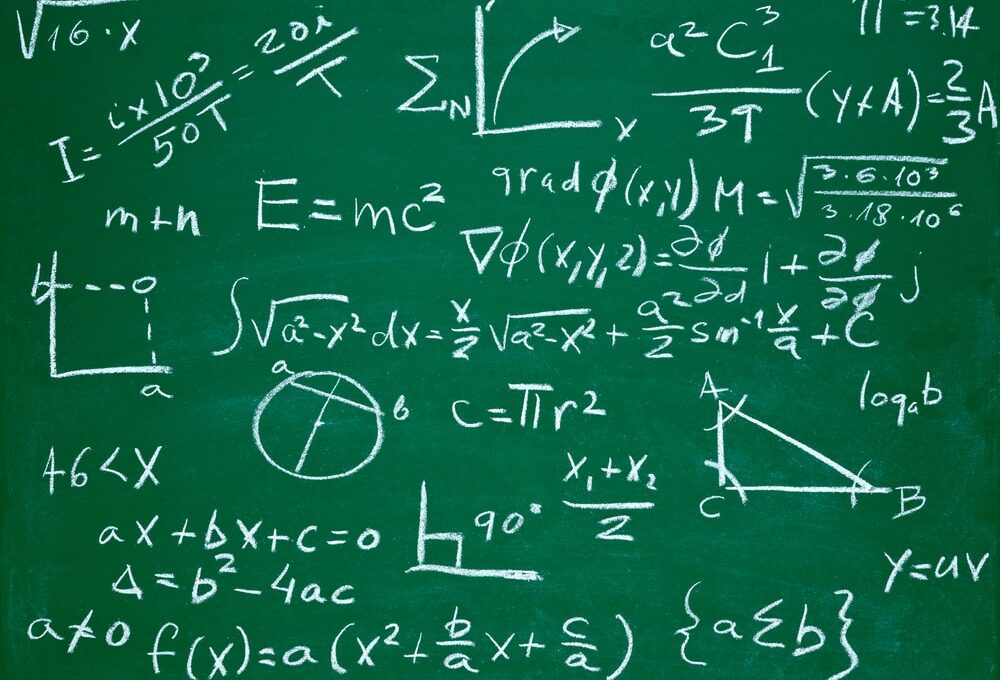Mathematics in Poker
Mathematics plays a crucial role in poker, and understanding fundamental concepts such as probability and odds is essential for achieving success in this game. Probability measures the chance of a specific event occurring, expressed as a number between 0 and 1, where 0 means the event is impossible, and 1 means the event is certain.
Probability in Poker
In poker, probability is used to assess various situations, such as the chance of completing a specific hand. For example, if you hold two cards to a flush and there are two more cards of the same suit on the table, you have nine remaining cards (outs) that can complete your flush out of the remaining 47 cards in the deck. The chance that the next card will be one of those nine is 9/47, or approximately 19%.
Odds and Pot Odds
Odds represent the ratio of unfavorable outcomes to favorable outcomes. Continuing the previous example, if you need one of nine cards out of the remaining 47, your odds are (47-9):9, which is 38:9, or approximately 4:1.
Pot odds are the ratio of the size of the pot to the cost of continuing to play. If the pot is $100, and you need to put in $25 to see the next card, your pot odds are 100:25, or 4:1. The decision to continue playing is made by comparing pot odds to the odds of completing the desired hand. If the pot odds are higher than the odds of completing the hand, it is worth continuing to play.
Expected Value (EV)
Expected Value (EV) is a concept that allows players to evaluate the profitability of different decisions in the long run. EV is calculated by multiplying the probability of each possible outcome by its value and summing these results.
Calculating EV: Suppose you have the opportunity to risk $10 to win $50, with a 20% (0.2) chance of winning. The expected value of this decision is: EV = (0.2 * $50) + (0.8 * -$10) EV = $10 – $8 EV = $2
A positive EV means that in the long run, such a decision is profitable. In poker, the goal is to make decisions with a positive EV, leading to long-term profits.
Practical Application of EV
Example: You are playing Texas Hold’em and holding a pair of nines. Before the flop, you calculate that the chance of hitting a set on the flop is about 12%. Suppose you need to add $10 to a pot that is $50. The pot odds are 5:1, which is better than the odds of hitting a set (about 8:1). Playing in this situation has a positive EV and is mathematically justified.
Mathematics in Poker Strategy
Calculating Outs
Outs are all the cards in the deck that can significantly improve your hand. For example, if you have a flush draw (four cards of the same suit), you have nine outs (the remaining cards of that suit in the deck) that can complete your flush.
Examples of calculating outs:
- Flush Draw: You have four cards of one suit, such as four spades. There are nine spades left in the deck that can complete your flush, so you have nine outs.
- Straight Draw: If you have a sequence of cards, such as 5-6-7-8, any nine or four will complete your straight. This means you have eight outs (four nines and four fours).
- Full House Draw: If you have a pair in your hand and hit three of a kind on the flop, any card matching your pair will complete a full house. You have two outs (the remaining two cards of your pair).
Concept of Pot Odds and Implied Odds
Pot Odds: Pot odds are the ratio of the size of the pot to the amount you need to contribute to stay in the game. Knowing pot odds is crucial for deciding whether to risk and add more to the pot.
Calculating Pot Odds: If the pot is $100, and you need to add $20 to see the next card, the pot odds are 100:20, or 5:1. If your odds of completing a winning hand are better than the pot odds, the decision to call is justified.
Implied Odds: Implied odds take into account potential future winnings you can achieve if you hit your outs. This is a more advanced concept because it requires predicting how much you can win in subsequent betting rounds.
Example of Implied Odds: If you have a flush draw and your pot odds are not favorable, but you believe the opponent will continue betting and you can win more in later rounds, implied odds may make calling worthwhile.
Card Combinations
Combinatorics in poker involves calculating the number of possible card combinations. This is key to assessing the likelihood of opponents holding specific hands and making strategic decisions.
Calculating Combinations:
- Pair: In a deck, there are 13 different values of cards (2-10, J, Q, K, A), and each of them appears in four copies. The number of combinations of two cards of the same value is (42)=6\binom{4}{2} = 6(24)=6.
- Three of a Kind: The combination of three cards of the same value from 13 possible values is (43)=4\binom{4}{3} = 4(34)=4.
Practical Application of Combinatorics: Suppose you are playing Texas Hold’em, and the flop shows cards of a suit matching your flush draw. Calculating the number of combinations of cards your opponents might have helps determine how often you can expect someone to have already completed a flush.
Example of Combinatorial Calculations: If the flop contains three cards of one suit, the number of possible combinations that can complete a flush with the opponent’s hand is 11 (remaining cards in the suit) * 10 (one of the remaining cards to the flush), which gives 110 combinations. Comparing this with the number of possible hands opponents might have helps you assess how likely it is that someone has already completed a flush.
Mathematics in Practical Play
Community Cards and Equity
In poker, “equity” refers to the expected value of winning the pot, expressed as a percentage. Equity can be defined as a player’s share of the pot, taking into account the probability of winning a given hand. The key element is understanding how equity changes depending on the community cards and opponents’ hands.
Calculating Equity: Equity is calculated based on all possible combinations of cards that may appear. For example, if you have a flush draw, and there are two cards of your suit on the flop, equity is the percentage chance of completing the flush in subsequent rounds. You can use equity calculators that automatically calculate your chances of winning in a given situation.
Practical Application of Equity: Suppose you are playing Texas Hold’em and holding an Ace and King of different suits (A♠ K♣). The flop shows 10♠ J♠ Q♣. You have a straight draw and a flush draw, which significantly increases your equity. Equity calculations help you assess whether it is worth risking further investment in the pot.
Bluffing and Mathematics
Bluffing is a key element of poker strategy, and mathematics can significantly increase the effectiveness of bluffs. To understand when a bluff is profitable, you must calculate the profitability of the bluff, considering pot odds and the probability that the opponent will fold.
Calculating Bluff Profitability: The profitability of a bluff can be calculated by analyzing how often the bluff must succeed to be profitable. For example, if the pot is $100, and you need to bet $20 on a bluff to win the pot, your bluff odds are 100:20, or 5:1. This means your bluff must succeed at least 20% of the time to be profitable.
Practical Application of Bluffing: Bluffing is most effective when the opponent has a wide range of hands that can fold. For example, if you are playing in a late position and everyone before you has folded, your chances of a successful bluff are higher. Analyzing historical data and opponents’ habits can help predict how often your bluff will be effective.
Mathematics and Bankroll Management
Bankroll management is a key element of long-term success in poker. Mathematics plays a crucial role here, helping players assess how much they can risk in a given game to minimize the risk of bankruptcy and maximize profits.
Bankroll Management Rules:
- Percentage Risk: One of the basic rules is to risk only a small percentage of your total bankroll in one game. For example, risking no more than 1-2% of your bankroll in a single session.
- Managing Variance: Poker is a high-variance game, meaning results can vary greatly in the short term. Managing variance involves maintaining a large enough bankroll to withstand losing streaks.
Practical Examples of Bankroll Management:
- Cash Games: If you have a $1,000 bankroll, it is recommended to play at tables where the maximum buy-in does not exceed $20-$50. This minimizes the risk of quickly depleting funds.
- Tournaments: If you play in tournaments, you should participate in those where the buy-in is no more than 1-2% of your bankroll. For example, with a $2,000 bankroll, it is optimal to participate in tournaments with a buy-in up to $40.
Applying mathematics to bankroll management: Mathematics also helps in calculating the probability of long-term success. For example, if your historical results show that you win 10% of tournaments, you can predict how large a bankroll you need to continue playing during a prolonged losing streak.
Mathematical Tools for Poker Players
Poker Software
In today’s technology era, poker software has become an indispensable tool for any serious player. With advanced algorithms and analyses, these programs help players understand and improve their game at a level that would be impossible to achieve without mathematical support.
Popular Poker Tools:
- PokerTracker:
- Description: PokerTracker is one of the most popular game analysis tools, collecting hand data, analyzing statistics, and generating reports to help players understand their strengths and weaknesses.
- Features: Hand history tracking, advanced player statistics, HUD (Heads-Up Display) showing real-time opponent data.
- Application: Game style analysis, identifying opponent habits, optimizing strategy.
- Hold’em Manager:
- Description: Hold’em Manager is an advanced Texas Hold’em hand analysis tool offering detailed reports and tools for improving gameplay.
- Features: Advanced statistics, hand analysis, HUD, game history review tools.
- Application: Strategy optimization, game trend analysis, HUD customization to player needs.
- Equilab:
- Description: Equilab is an equity calculator allowing players to calculate their chances of winning in various poker situations.
- Features: Equity calculation, opponent hand range analysis, scenario simulations.
- Application: Win probability assessment, equity-based strategy planning, poker education.
Poker Calculators
Poker calculators are tools that help players calculate key values such as pot odds, implied odds, and equity in real time. They are invaluable support, especially for players who are just starting their poker journey or want to improve their mathematical skills.
Types of Poker Calculators:
- Pot Odds Calculators:
- Description: These calculators help players calculate pot odds based on the size of the pot and the required amount to call.
- Application: Quick decision-making on whether continuing to play is mathematically justified.
- Equity Calculators:
- Description: Equity calculators calculate the probability of winning in a given hand based on the player’s and community cards.
- Application: Win probability assessment, strategy optimization, learning and game analysis.
- Implied Odds Calculators:
- Description: These calculators consider potential future winnings that can be achieved if you hit your outs.
- Application: Decision-making based on predicting future winnings, more advanced risk analysis.
Practical Tips for Using Software and Calculators
- Integrate Tools with Your Game: Use poker software in real time to access key statistics and data instantly. HUD (Heads-Up Display) is particularly useful for monitoring opponents’ habits and adjusting strategies.
- Regular Game Analysis: After each session, take the time to analyze your hands using PokerTracker or Hold’em Manager. Look for patterns in your game, identify mistakes, and develop improvement plans.
- Education and Development: Use equity and pot odds calculators to understand the mathematical basis of your decisions. Simulate different scenarios and learn how various factors affect your chances of winning.
- Strategy Adjustment: Use data and reports from the software to continuously adjust your strategy. Be flexible and ready to change your approach based on the analysis of results and opponents’ playing styles.
Using advanced mathematical tools and poker software is key to achieving success in poker. These technologies not only help you understand the game on a deeper level but also enable more informed decisions, minimize risk, and maximize profits. A modern poker player who effectively utilizes these tools has a significant advantage over opponents and is better prepared to succeed in the long run.






Leave a Comment